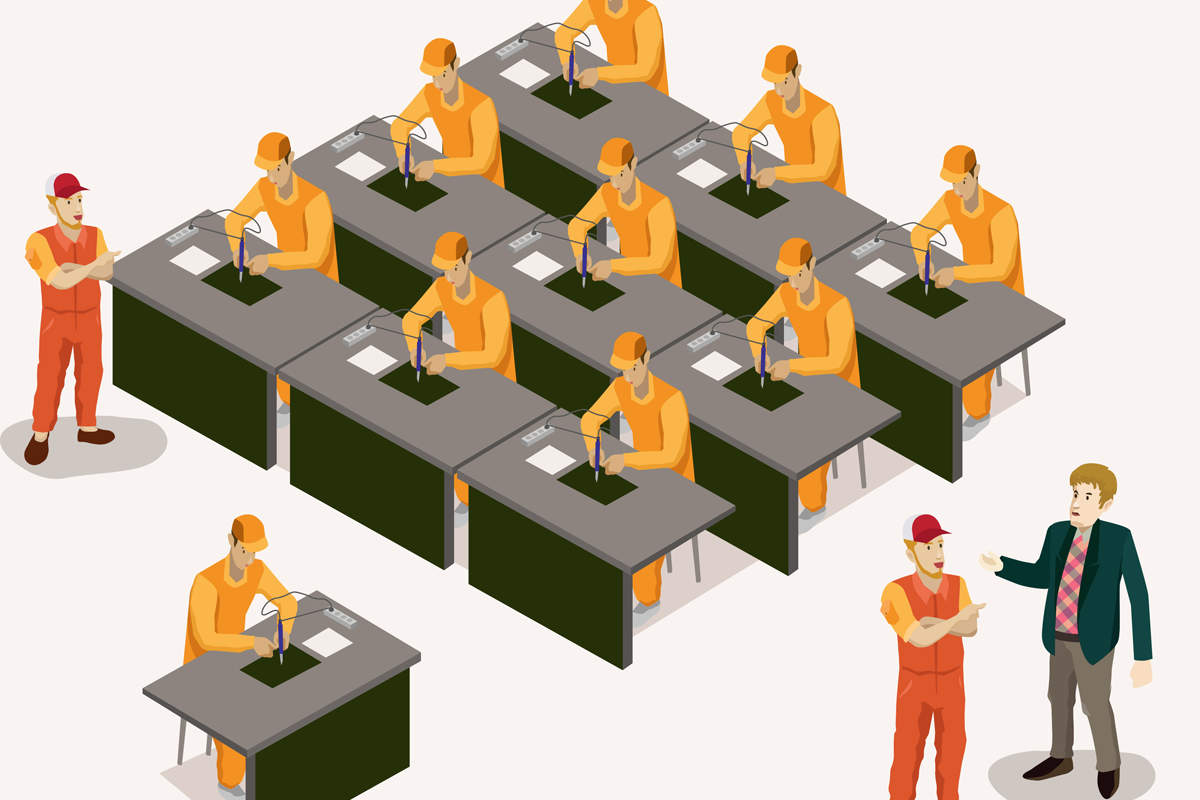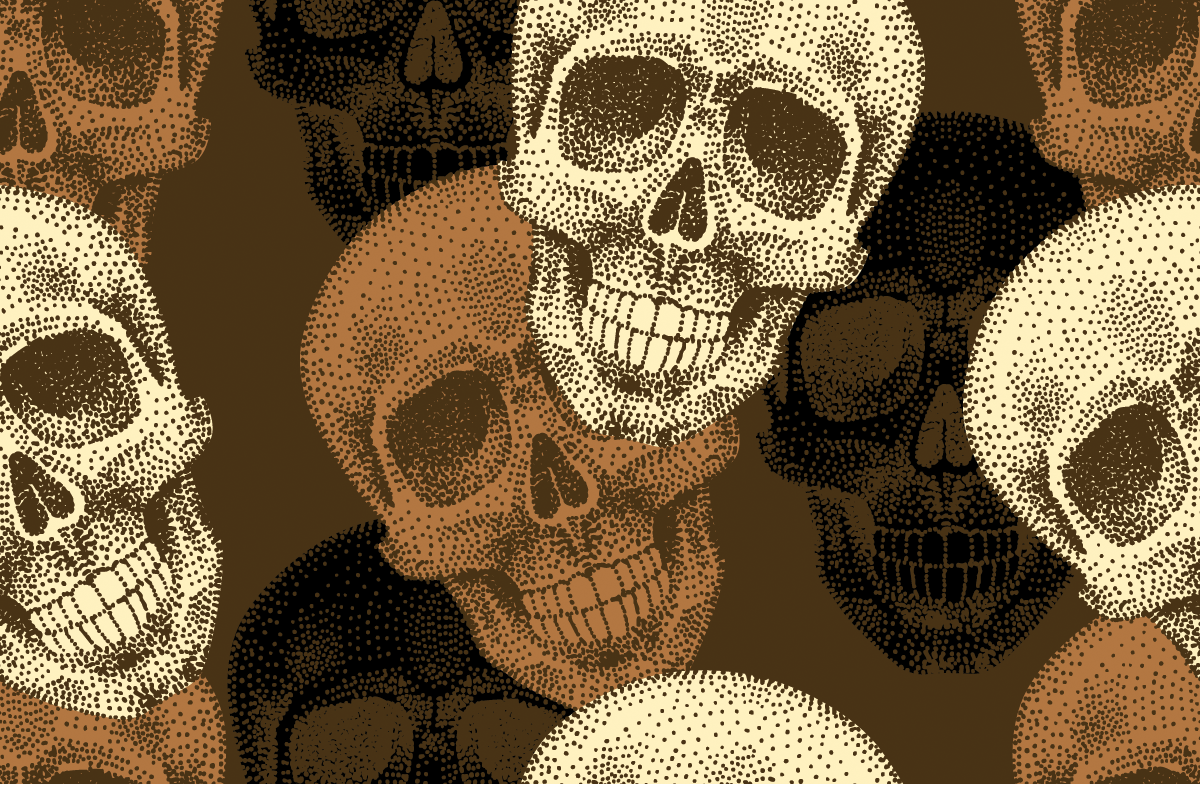Why Risk And Uncertainty Is Scary

We humans don’t like doing new things. Our brains very much like to settle into as many auto pilot situations as we can. Much of our thinking patterns and collections of biases evolved to cut down on thinking energy. Because our brains are a pretty expensive organ (operational calories needed per weight), we have plenty of systems built in to find shortcuts in thinking whenever possible.
Faster Is Better
One of the reasons is that way back in the day, those who thought quicker had a much better chance of surviving that those who slowly reasoned everything out. Today we have the luxury of spending a few hours in a coffee shop discussing the implications of the latest superhero movie. But it wasn’t always that way.
Food Always Needed
Ancient humans always had to be on the hunt. Food was hard to get. Hunting took time. Not only that but there was danger around every corner. So the idea of sitting around contemplating things just didn’t exist. We had to react, not think. Fast thinking, even though it was often not accurate, was more successful than slow thinking.
Always Changing Landscape
For all other animals, instincts are perfectly fine. They are in balance with their environment. Rabbits eat grass, monkeys eat bananas, wolves eat squirrels. For each of these animals, they are locked in a Malthusian balance. Malthus was a population scientist (among other things) long before the industrial revolution.
He found that all animals are trapped inside four variables: Population, birth rate, death rate and food per individual. When one moves, they rest move correspondingly. An increase in food will lead to an increase in population until it’s balanced out. A decrease in population, with the same total food, will either increase food per animals, or the birth rate will make more animals.
Humans Were The Same – But Different
Humans were locked into those same four variables, at least until the Industrial Revolution. But the thing that was different about humans was our source of food. We don’t only eat one source of calories like most other animals. We evolved to eat anything. Which mean we could live in many different environments.
Landscape Always Changing

This meant that we never really got the luxury of settling down. Ancient humans were nomads, and had to always be on some kind of learning curve. Structurally, we were the same as monkeys. Finding things to eat. But the things we ate could be very different.
Sometimes these were huge animals like wooly mammoths. Sometimes these were fish. But they were all different. Catching fish requires different skills that hunting a giraffe.
Skills Always Evolving
Young hunters had poor skills. They had to learn from older hunters. Tribes that exist in the Brazilian rainforest follow this same structure. The more experience they get, the better the hunters they are. There are two main components how humans learned in ancient times, and how humans learn in current primitive environments.
Modeling

We learn best by copying. Young hunters follow old hunters and copy what they do. In the middle ages young apprentices had to find a master of any skill to learn from. This took several years, sometimes decades. It all starts with modeling. Working alongside of an experienced, older person, and copying what they do.
Trial And Error
Nobody gets anything right the first time. When you were in PE class in elementary school, the gym teacher showed you how to do something. You copied him or her and tried yourself. Just watching and copying is not enough. Once you get the basic stance down, you need to practice. A lot. Some of us, (ahem), practiced a lot and we still sucked.
Helpful Guidance By Experts
In tribal times and in PE classes, young people copy more experienced older people. And hopefully, the more experienced older people will slowly correct the younger people when mistakes arise. This system worked perfectly for a long time. It ensured that each generation would slowly learn the skills needed to carry on the society. Every generation was more or less the same, even as new technology and inventions were slowly created.
BOOM! – Population Explosion

What happened during the Industrial Revolution? It’s mainly attributed to a time of inventions, mass production, factories, and global expansion. But the most vital success of the Industrial Revolution was the amount of food they could get out of the ground. Up until that point, humans were just like rabbits.
Food – Population
The amount of food, the amount of animals (even humans) were locked together. If the food increased, so did the animals. If the food decreased, so did the number of animals. What was remarkable about the Industrial Revolution is it significantly increased the amount of calories that could be taken out of the ground per acre. Believe it or not, the amount of food per acre taken from the Earth has been increasing ever since.
It has to be, otherwise we would have reached the carrying capacity of Earth a long time ago. As the population keeps expanding, so does our ability (luckily) to take more food (per acre) out of the ground.
Generational Transfer Of Skills No Longer Possible
Three things exploded. The number of people, the number of things being produced, and the number of jobs needed to make those things. This made it much less likely for the old style of skills being transferred from generation to generation.
Schools As Sorting Systems

This is when the first mass educational systems were created. But they weren’t created to teach people. Societies needed several classes of people. The first schools were a system to sort people into their most likely class.
They weren’t meant to teach people anything. They were designed to figure out who would best be factory workers, where the labor was repetitive and boring, who would be the best soldiers and who might make for the best intellectuals.
No More Life Long Learning
This put an end to the idea of life long learning. The idea was that for the vast majority of people, they would be shuffled into the factories where they would do the same monotonous jobs over and over and over. The early schools have been described as factories to produce factory workers. They were taught the rudimentary skills of arithmetic needed for those monotonous jobs.
Two World Wars

Shortly after the Industrial Revolution were two world wars that soaked up a lot of manpower. After the two world wars, most of the factories were destroyed, except for those in the United States. The U.S. (after having demonstrated its willingness to use two nuclear weapons) was in a very powerful position. The U.S. dictated world monetary policy. This combined with the fact that the only factories on Earth were in the United States allowed the U.S. economy to boom.
Middle Class Expansion
This is when the middle class expanded tremendously. What that mean to individuals, specifically, is most important for our purposes here. Soon after the end of WWII, it was possible for the average American worker to get a basic High School education, a job in a factory, and live a comfortable middle class life on a single salary. This was truly the Golden Times for the American middle class.
Simple But Boring Job

For most American workers, all one had to do was show up, do what they were told, and get paid. Technology crept forward slow enough so a worker with average intelligence and a high school education could easily keep up.
Those Days Are Over
The path from the Industrial Revolution to where we are now has been chaotic and non-linear. Compared to the time before, where for hundreds of years continuous learning on the job was required, wage earners had the ability to get by with very little continuous learning. The idea of learning a simple job, doing what you were told, and making a decent living was not the norm by any means. It was an unsustainable, once-off event.
Supply And Demand

The laws of supply and demand tell us that if something is very common, it’s not going to be worth very much. If something is wanted and in very short supply, then that thing will be very expensive. Water is everywhere on the planet, so it can be purchased very cheaply. Fifty year old scotch, on the other hand, isn’t in very large supply and is consequently very expensive.
Easy Skills Are Not Valuable
Consider that the days are long gone where you can show up to work, do what you’re told, and earn a decent living. It was possible for workers in the fifties and sixties, but that was only due to the very unique, post-war situation in the United States. Today it’s the opposite. Now that the world has caught up and those same factory jobs have been outsourced, the idea of getting paid to do only what you are told is not even enough to pay the rent.
Re-Awaken Continuous Learning

The past couple hundred years has been one of the few times that some people could skate by on only doing what they are told, and only slowly learning things as technology changed. Consider embracing your instinctive and inner learner. There are a couple ways of doing this.
Being Trained
Many people feel that it is the obligation of employers, governments, schools etc. to do the training. It’s certainly a good position to be in to have an employer who takes efforts to make sure their employees are always up to speed on the latest technology, and have every option available to pursue education on their own. But consider that any time you are depending on people other than yourself for your own livelihood, you run the risk of being left behind.
Taking The Initiative
Consider being an active agent in your continued learning. We say “learning” rather than education because the idea of education is very limited. Learning, on the other hand, can be done anywhere, any time. All it requires is you be willing learn new things. What things? As many as you can.
Time Is Precious

Everybody on Earth is given the same amount of time. Barring any accidents or illnesses, we all are here for 80 years or so. Each year we all have the same time per day. What we do with our time is the difference between just getting by and being extremely successful.
Reverse Engineering Success
We can look at some of the most successful entrepreneurs and see what they can tell us. Nobody ever got rich by sitting around and waiting for their opportunity. Nobody got rich by waiting to “be trained” how to make money.
If there is one common denominator, those who succeed took it upon themselves to do whatever was needed to succeed. They didn’t wait to be told what to do. They didn’t wait for opportunities to come knocking. They went looking, and either found them or made them.
Get Out Of Your Comfort Zone

Now we run the risk of spouting metaphysical ideas you’ve no doubt heard before. But it is true that the size of your comfort zone will define the size of your life. What does this mean? Those with a very small comfort zone aren’t very comfortable doing things that are in the slightest bit risky.
They only do things that have a high guarantee of success. They wait for others to go first to prove it is safe. Always remember the law of supply and demand. Anybody can stay safely in their comfort zone. Because people who can stay safely in their comfort zone are in such high supply, they aren’t worth much.
Small Daily Steps
You don’t need to barge into your bosses office and demand a raise. But you can do one small thing every single day that is slightly outside of your comfort zone. Something where you aren’t quite sure what the outcome will be. Something where the outcome will give you valuable information.
Trial And Error Learning
As discussed above, learning new skills is a combination of modeling (copying experts) and learning by doing, which necessarily requires trial and error learning. Even shooting free throws is trial and error learning.
What skills should you learn? What skills do you want to learn? Consider making the decision to always be learning something. Something small on it’s own, or a small daily piece of a much larger puzzle.
Positive ROI

ROI means return on investment. If you spend a hundred dollars on advertising, and you get a hundred and twenty dollars in sales as a result, that is an ROI of 20%. Finding positive ROI in terms of money is one of the prime directives of all businesses.
Beyond the boring day to day business details, consider what this means in metaphysical terms. A system where every hundred bucks you put in spits out a hundred and twenty, consistently, is as close to modern alchemy as we’ll ever get.
This is much easier said than done. All businesses that find such a fat ROI are usually replicated quickly by competitors. A competitor repeats the process, and sells their product a little bit cheaper, accepting an ROI of 15%, compared to 20%, for example. Positive ROI’s are always in flux, and never permanent. From a purely business standpoint, the idea of a consistently positive ROI is a never-ending goal that is always moving.
Consider Personal Time ROI
Start to ask yourself what is the benefit of doing any particular activity. It’s not nearly as easy as managing a financial measurement, but consider that you spend time just like you spend money. And consider that you can waste time just like you can waste money. Consider that the best use of your time is making yourself more valuable to others. The more valuable you are to others, the more money you’ll make. Sure, there are a lot more variables, but that’s the gist of human life on Earth.
People – Desires – Skills – Money

All people have desires they’d like to fulfill and problems they’d like to solve. All people have skills that can use to help satisfy the desires of others, or solve the problems of others. The reward for doing this is money. If you satisfy another person’s desire, they’ll pay you. If you can solve a problem, they’ll pay you. The more you point your never-ending skill-potential toward satisfying desires and solving problems, the more you’ll get paid.
Take Full Responsibility – No Matter What
It’s easy to blame others. Especially when it really is their fault. But simply because it may be their fault does not mean they are going to fix whatever’s broken. It certainly feels good on an emotional level to get validation that your problems were caused by others.
But the cold harsh truth is that there’s not a lot of money in being a victim. Being a victim is easy. Pointing fingers outside yourself is easy. And anything that is easy can be done by anybody, which according to the law of supply and demand, isn’t worth much. Being a victim, even eloquently, passionately, and truthfully blaming others will not get you paid.
Follow The Money
A good rule of thumb is to focus your efforts toward greater paydays and income streams. Forget about waiting for permission. Be willing to try things on your own. Start wherever you are, and point yourself in the direction of more income. Nobody will do this for you. Those that take the initiative and make themselves valuable to others tend to get paid. Those that wait to be told what to do don’t. That’s not fair, that’s not a happy thought, but that’s the way it is.
Start Small
Learning is a skill like any other. If you start small, and slowly shift your life so that you spend your time much more wisely, you’ll be much better off. You’ll find that the true secret of happiness is that it comes not from attaining riches or benefits, but actively pursuing them. Forward momentum is the most important thing. Doing things to get closer to a goal chosen by you. When you start to feel that forward momentum, that is when life feels on purpose.
Learn More

Mind Persuasion has many courses books designed to help you start from wherever you are and get busy squeezing the most happiness and money out of life as you can.
Mind Persuasion Books
Mind Persuasion Courses